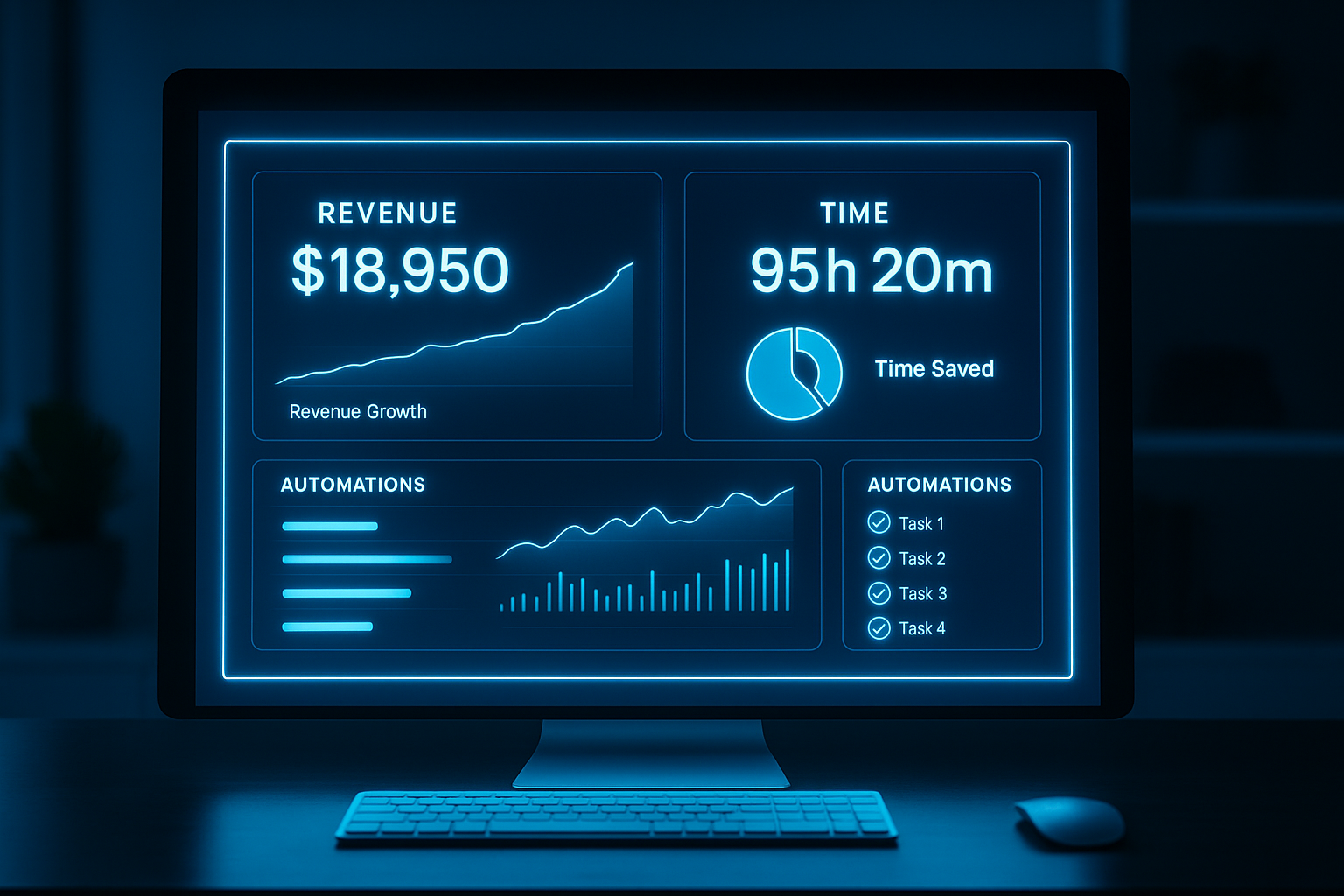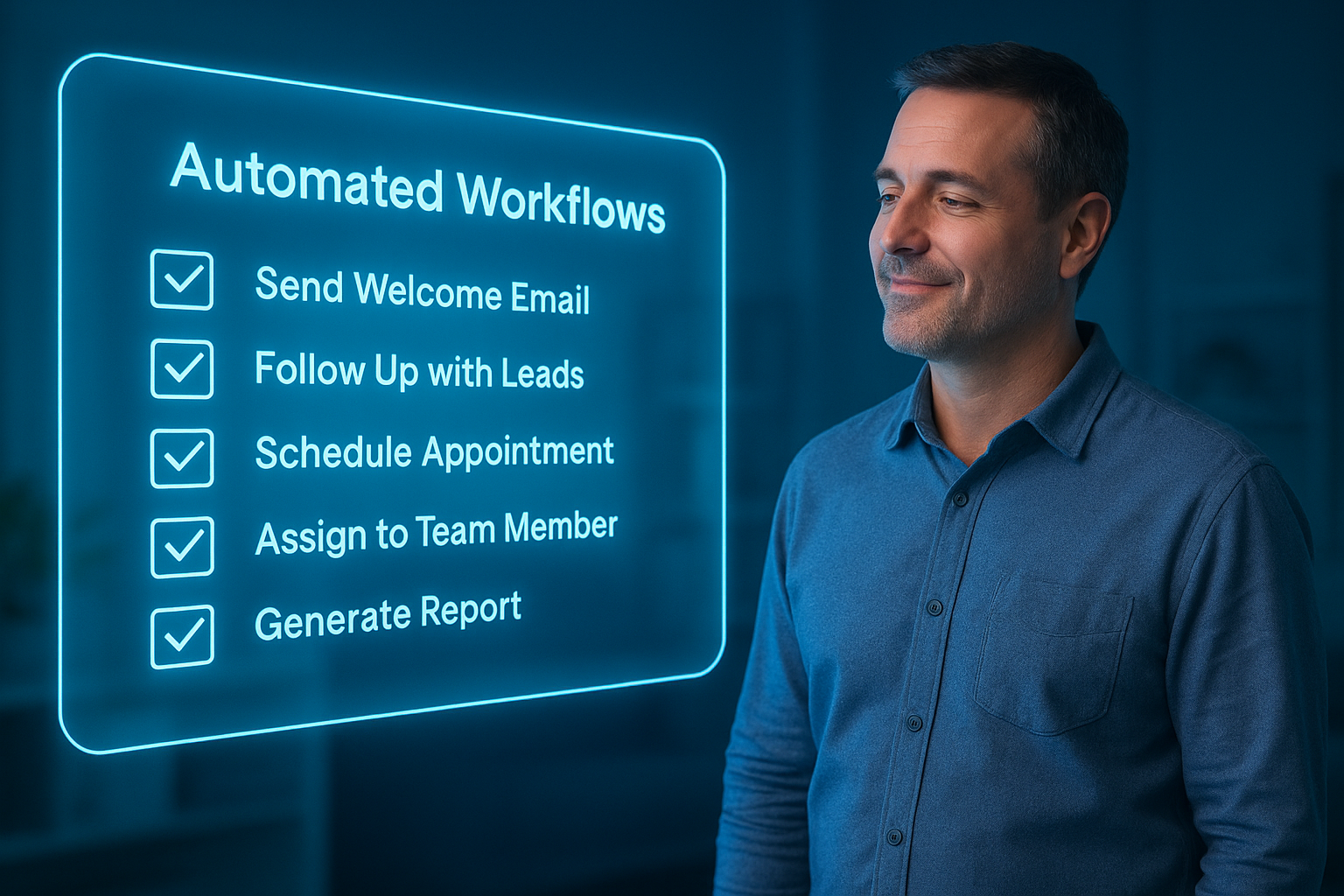The Efficiency Blueprint: A Week-by-Week Implementation Plan
How to Build a Scalable, Streamlined
Business in Just a Few Focused Weeks
A business without systems will always plateau. It’s not a matter of effort—it’s a matter of bandwidth.
Systems create the structure that makes growth sustainable.
The good news? You don’t need to rebuild your business from scratch to make it more efficient. You just need a focused implementation plan that lets you chip away at your biggest bottlenecks, one week at a time. This blueprint walks you through exactly that. Use it as your roadmap to systematize your business, step-by-step.
Week 1: Audit Your Current Workflows
Goal: Get clarity on what’s working, what’s chaotic, and where time is being wasted.
- List every repeatable process (client onboarding, invoicing, lead follow-up)
- Track time spent per task for one full week
- Ask: “What am I doing that someone (or something) else could do?”
Check out How to Use Automation to Reclaim 10+ Hours a Week to learn how reclaimed time feeds into this plan.
Week 2: Create Your Workflow Maps
Goal: Visualize your processes so you can identify breakdowns and automation opportunities.
- Use tools like Miro, Notion, or even a whiteboard
- Map each step of core processes
- Highlight where delays, confusion, or manual repetition happens
Week 3: Build or Refine Your CRM Foundation
Goal: Set up a CRM that captures, tracks, and moves leads through a pipeline automatically.
- Segment leads by type, stage, or behavior
- Connect forms, calendars, and follow-up automation
- Create one lead nurture sequence and one onboarding sequence
Week 4: Automate Top 3 Time-Draining Tasks
Goal: Build automations that give you your time back every day.
- Identify your 3 most repeated manual tasks
- Build workflows using tools like GoHighLevel, Zapier, or Make
- Test every flow before going live
Examples:
- Missed call text-back + booking
- New lead auto-response + nurture
- Form submission → CRM tag → Email sequence
Week 5: Set Up Your Client Experience System
Goal: Make onboarding and delivery predictable, scalable, and efficient.
- Create a client portal or dashboard (Google Drive, Notion, or GHL membership area)
- Use pre-written emails or videos to automate onboarding
- Standardize deliverables, touchpoints, and timelines
Week 6: Delegate What You Shouldn’t Be Doing
Goal: Take low-impact tasks off your plate so you can focus on growth.
- Create a list of everything that drains you or slows momentum
- Assign to tools (automation) or people (contractor/team)
- Document handoff processes for repeatability
Week 7: Create a Maintenance & Metrics System
Goal: Monitor your systems so they keep running smoothly and scale with you.
- Set calendar reminders to audit automations monthly
- Use dashboards to track lead flow, conversion, and bottlenecks
- Build a “System Log” to record changes, fixes, and performance
Final Takeaway
You don’t need to systematize your whole business overnight. You just need a plan that helps you move one layer at a time—with purpose.
Structure builds clarity. Clarity builds consistency. Consistency builds growth.
Use this blueprint to reduce overwhelm, reclaim your time, and prepare your business for scalable success.
Next Steps
Want help implementing your efficiency plan? Book a Business Growth Audit with The Omnia Co—we’ll review your current systems, map out your bottlenecks, and help you build your automation and workflow strategy for long-term success.
More Marketing Tips, Tricks & Tools










